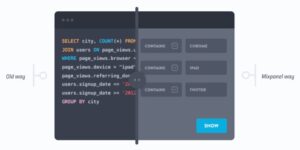What is user engagement?
Why is user engagement so important?

User engagement is highly correlated with overall profitability. User attention is a finite resource and if users choose to spend their time on a particular app or site, they’re signaling that they find value in it. This allows businesses to make money from the product or service with ads, subscriptions, or sales. Highly engaged users are more likely to buy, return, and share the product or service with friends. Product and marketing teams that measure user engagement can use product analytics to understand the factors that contribute to higher engagement. By improving engagement, teams can improve the product’s profitability. No two definitions of user engagement are alike. Hard metrics such as daily active users, cost-per-acquisition, and ROI are fairly straightforward while engagement always depends upon the company’s business model. High engagement via views or clicks might be good for a news site but not for an insurance app, where more usage might suggest that a user is about to file a claim.
How to calculate user engagement
To calculate user engagement, teams must decide what engagement means to them. For a media publication, all activities might be considered positive engagement because the site makes money from advertising. For an e-commerce store, activities might only be considered positive engagement if they are correlated with a positive outcome such as purchases, or at least adding items to a cart. Here are activities that different businesses might count as engagement:
- Media site: Daily usage, views, time on page, clicks, searches, comments, shares
- Streaming music app: Daily usage, time spent in app, songs listened to, playlists created, friends added
- E-commerce store: Monthly usage, adding items to cart
- Personal finance app: Weekly usage, sync bank accounts, create a budget, enable notifications, view dashboard
- Enterprise software: Monthly usage, create reports, share reports, invite users
It’s also important to define and track negative actions such as unsubscribes, app deletions, plan downgrades, and silenced notifications. If analytics teams know which events cause users to become disengaged, they can improve engagement. Product teams often measure the average activity of all users as a benchmark. For greater granularity, the team can calculate the varying levels of engagement among their top user groups or cohorts.
How to improve user engagement
To improve user engagement, product teams must analyze their users’ actions to make changes and improve the experience. They can do this by:
Finding out what users consider valuable
What is it within the app or service that users find valuable? Is it a utility, like a banking app, or a guilty pleasure, like a daily deals site? Product teams can segment their users and follow both individuals and cohorts to see which actions they repeat. This is sometimes referred to as the golden path or customer journey. For a news site, users might find value in feeling informed, elated, or outraged. For a social media app, it might be a hit of dopamine upon feeling socially connected. Identify these key moments and consider product changes that deliver more of them.
Improving the product’s usability
While increasing engagement sounds the duty of marketers, product usability is the foremost factor in increasing user engagement. Users are conditioned to expect simple and effective interfaces, and will often seek alternatives until they find one that satisfies their need. By analyzing the customer journey and identifying events that cause users to drop-off, product teams can find and fix usability issues. An e-commerce store, for example, might find that a significant number of users drop off when they reach the checkout page. After user testing, they might find that users are turned off by the burden of creating an account. As a fix, the team might add an option to check out as a guest or add digital wallets as a payment alternative. By reducing friction, product teams can improve the users’ journey and make it easier for them to find value. At the same time, product teams can try to give users more reasons to interact. Apps are considered sticky when users return to them frequently. If a product team can make its app useful on a daily rather than just weekly or monthly basis, it will be stickier and thus more engaging.
Educating users, especially new ones
Every user’s interests change over time. Product teams can help educate them through that journey. New users are often still forming first impressions and trying to find the initial value. Months later, as experts, they may have very different needs such as shortcuts or advanced reports. Product teams can help both new and experienced users by slowly unfurling the product’s capabilities over time. Teams can hide advanced features, say, by changing them from buttons to more subtle linked text. This keeps the additional options from intimidating new users but still makes these features available for advanced users. For all new users, onboarding is a crucial inflection point. Users could have been driven to the service out of pure curiosity or a recommendation rather than a need. Product teams must design the service to help users quickly discover its value or they risk losing them. The streaming video service Netflix helps new and returning users find value by presenting movie suggestions. Other digital product teams use in-app messages, walk-throughs, help widgets, FAQs, and chat support to keep users engaged.
Communicating with users
Product and marketing teams can also simply ask users what they want. There is often a cohort of advanced users who are eager to share their experiences, desires, and the bugs they find. Product and marketing teams can use in-app notifications, surveys, and track NPS to reach out to these users. For users that leave the app and can no longer be reached, product teams can use push-notifications to bring them back.


